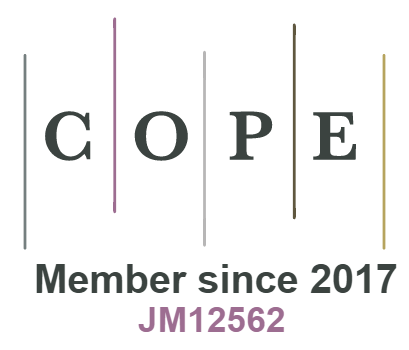Evaluating Current Techniques for Detecting Vulnerabilities in Ethereum Smart Contracts
DOI:
https://doi.org/10.18034/ei.v11i1.717Keywords:
Ethereum, Smart contracts, Vulnerability Detection, Security Analysis, Blockchain Technology, Code Auditing, Solidity programming, Risk assessmentAbstract
Ethereum intelligent contract security must be guaranteed since these decentralized apps oversee large-scale financial transactions independently. To strengthen the dependability and credibility of Ethereum smart contracts, this paper assesses existing methods for finding weaknesses in them. The primary goals are to evaluate how well hybrid approaches, formal verification, dynamic analysis, and static analysis find vulnerabilities. Methodologically, a thorough assessment of available resources and instruments was carried out to evaluate the advantages and disadvantages of each approach. Important discoveries show that although static analysis covers a large area, it ignores runtime-specific problems and produces false positives. While highly effective in finding runtime vulnerabilities, dynamic analysis is resource-intensive. High assurance is provided by formal verification, although it is complex and resource-intensive. Hybrid approaches combine several approaches to provide a well-rounded strategy but must be used carefully. The policy implications emphasize that to limit risks effectively, it is crucial to embrace multifaceted security techniques, set explicit norms, and promote easily accessible verification tools. This research advances our knowledge of smart contract security and guides policymakers and developers on securing blockchain applications.
Downloads
References
Addimulam, S., Mohammed, M. A., Karanam, R. K., Ying, D., Pydipalli, R., Patel, B., Shajahan, M. A., Dhameliya, N., & Natakam, V. M. (2020). Deep Learning-Enhanced Image Segmentation for Medical Diagnostics. Malaysian Journal of Medical and Biological Research, 7(2), 145-152. https://mjmbr.my/index.php/mjmbr/article/view/687
Ahmmed. S., Sachani, D. K., Natakam, V. M., Karanam, R. K. (2021). Stock Market Fluctuations and Their Immediate Impact on GDP. Journal of Fareast International University, 4(1), 1-6. https://www.academia.edu/121248146
Anumandla, S. K. R. (2018). AI-enabled Decision Support Systems and Reciprocal Symmetry: Empowering Managers for Better Business Outcomes. International Journal of Reciprocal Symmetry and Theoretical Physics, 5, 33-41. https://upright.pub/index.php/ijrstp/article/view/129
Colbaugh, R., Glass, K. (2012). Anticipating Complex Network Vulnerabilities Through Abstraction-based Analysis. Security Informatics, 1(1), 1-11. https://doi.org/10.1186/2190-8532-1-9 DOI: https://doi.org/10.1186/2190-8532-1-9
Dhameliya, N. (2022). Power Electronics Innovations: Improving Efficiency and Sustainability in Energy Systems. Asia Pacific Journal of Energy and Environment, 9(2), 71-80. https://doi.org/10.18034/apjee.v9i2.752 DOI: https://doi.org/10.18034/apjee.v9i2.752
Dhameliya, N., Mullangi, K., Shajahan, M. A., Sandu, A. K., & Khair, M. A. (2020). Blockchain-Integrated HR Analytics for Improved Employee Management. ABC Journal of Advanced Research, 9(2), 127-140. https://doi.org/10.18034/abcjar.v9i2.738 DOI: https://doi.org/10.18034/abcjar.v9i2.738
Dhameliya, N., Sai Sirisha Maddula, Kishore Mullangi, & Bhavik Patel. (2021). Neural Networks for Autonomous Drone Navigation in Urban Environments. Technology & Management Review, 6, 20-35. https://upright.pub/index.php/tmr/article/view/141
Fang, Z., Liu, Q., Zhang, Y., Wang, K., Wang, Z. (2017). A Static Technique for Detecting Input Validation Vulnerabilities in Android Apps. Science China. Information Sciences, 60(5), 052111. https://doi.org/10.1007/s11432-015-5422-7 DOI: https://doi.org/10.1007/s11432-015-5422-7
Kaulartz, M., Heckmann, J. (2016). Smart Contracts - Anwendungen der Blockchain-Technologie. Computer und Recht, 32(9), 618-624. https://doi.org/10.9785/cr-2016-0923 DOI: https://doi.org/10.9785/cr-2016-0923
Koehler, S., Dhameliya, N., Patel, B., & Anumandla, S. K. R. (2018). AI-Enhanced Cryptocurrency Trading Algorithm for Optimal Investment Strategies. Asian Accounting and Auditing Advancement, 9(1), 101–114. https://4ajournal.com/article/view/91
Maddula, S. S. (2018). The Impact of AI and Reciprocal Symmetry on Organizational Culture and Leadership in the Digital Economy. Engineering International, 6(2), 201–210. https://doi.org/10.18034/ei.v6i2.703 DOI: https://doi.org/10.18034/ei.v6i2.703
Maddula, S. S., Shajahan, M. A., & Sandu, A. K. (2019). From Data to Insights: Leveraging AI and Reciprocal Symmetry for Business Intelligence. Asian Journal of Applied Science and Engineering, 8(1), 73–84. https://doi.org/10.18034/ajase.v8i1.86 DOI: https://doi.org/10.18034/ajase.v8i1.86
Mohammed, M. A., Kothapalli, K. R. V., Mohammed, R., Pasam, P., Sachani, D. K., & Richardson, N. (2017). Machine Learning-Based Real-Time Fraud Detection in Financial Transactions. Asian Accounting and Auditing Advancement, 8(1), 67–76. https://4ajournal.com/article/view/93
Mouzarani, M., Sadeghiyan, B., Zolfaghari, M. (2016). A Smart Fuzzing Method for Detecting Heap-based Vulnerabilities in Executable Codes. Security and Communication Networks, 9(18), 5098-5115. https://doi.org/10.1002/sec.1681 DOI: https://doi.org/10.1002/sec.1681
Mullangi, K. (2017). Enhancing Financial Performance through AI-driven Predictive Analytics and Reciprocal Symmetry. Asian Accounting and Auditing Advancement, 8(1), 57–66. https://4ajournal.com/article/view/89
Mullangi, K., Maddula, S. S., Shajahan, M. A., & Sandu, A. K. (2018). Artificial Intelligence, Reciprocal Symmetry, and Customer Relationship Management: A Paradigm Shift in Business. Asian Business Review, 8(3), 183–190. https://doi.org/10.18034/abr.v8i3.704 DOI: https://doi.org/10.18034/abr.v8i3.704
Mullangi, K., Yarlagadda, V. K., Dhameliya, N., & Rodriguez, M. (2018). Integrating AI and Reciprocal Symmetry in Financial Management: A Pathway to Enhanced Decision-Making. International Journal of Reciprocal Symmetry and Theoretical Physics, 5, 42-52. https://upright.pub/index.php/ijrstp/article/view/134
Nizamuddin, M., Natakam, V. M., Sachani, D. K., Vennapusa, S. C. R., Addimulam, S., & Mullangi, K. (2019). The Paradox of Retail Automation: How Self-Checkout Convenience Contrasts with Loyalty to Human Cashiers. Asian Journal of Humanity, Art and Literature, 6(2), 219-232. https://doi.org/10.18034/ajhal.v6i2.751 DOI: https://doi.org/10.18034/ajhal.v6i2.751
Patel, B., Mullangi, K., Roberts, C., Dhameliya, N., & Maddula, S. S. (2019). Blockchain-Based Auditing Platform for Transparent Financial Transactions. Asian Accounting and Auditing Advancement, 10(1), 65–80. https://4ajournal.com/article/view/92
Patel, B., Yarlagadda, V. K., Dhameliya, N., Mullangi, K., & Vennapusa, S. C. R. (2022). Advancements in 5G Technology: Enhancing Connectivity and Performance in Communication Engineering. Engineering International, 10(2), 117–130. https://doi.org/10.18034/ei.v10i2.715 DOI: https://doi.org/10.18034/ei.v10i2.715
Puchkov, F. M., Shapchenko, K. A. (2005). Static Analysis Method for Detecting Buffer Overflow Vulnerabilities. Programming and Computer Software, 31(4), 179-189. https://doi.org/10.1007/s11086-005-0030-8 DOI: https://doi.org/10.1007/s11086-005-0030-8
Pydipalli, R., Anumandla, S. K. R., Dhameliya, N., Thompson, C. R., Patel, B., Vennapusa, S. C. R., Sandu, A. K., & Shajahan, M. A. (2022). Reciprocal Symmetry and the Unified Theory of Elementary Particles: Bridging Quantum Mechanics and Relativity. International Journal of Reciprocal Symmetry and Theoretical Physics, 9, 1-9. https://upright.pub/index.php/ijrstp/article/view/138
Rodriguez, M., Shajahan, M. A., Sandu, A. K., Maddula, S. S., & Mullangi, K. (2021). Emergence of Reciprocal Symmetry in String Theory: Towards a Unified Framework of Fundamental Forces. International Journal of Reciprocal Symmetry and Theoretical Physics, 8, 33-40. https://upright.pub/index.php/ijrstp/article/view/136
Sachani, D. K., & Vennapusa, S. C. R. (2017). Destination Marketing Strategies: Promoting Southeast Asia as a Premier Tourism Hub. ABC Journal of Advanced Research, 6(2), 127-138. https://doi.org/10.18034/abcjar.v6i2.746 DOI: https://doi.org/10.18034/abcjar.v6i2.746
Sengupta, A., Mazumdar, C., Bagchi, A. (2011). A Formal Methodology for Detecting Managerial Vulnerabilities and Threats in an Enterprise Information System. Journal of Network and Systems Management, 19(3), 319-342. https://doi.org/10.1007/s10922-010-9180-y DOI: https://doi.org/10.1007/s10922-010-9180-y
Shajahan, M. A. (2021). Next-Generation Automotive Electronics: Advancements in Electric Vehicle Powertrain Control. Digitalization & Sustainability Review, 1(1), 71-88. https://upright.pub/index.php/dsr/article/view/135
Shajahan, M. A. (2022). Bioprocess Automation with Robotics: Streamlining Microbiology for Biotech Industry. Asia Pacific Journal of Energy and Environment, 9(2), 61-70. https://doi.org/10.18034/apjee.v9i2.748 DOI: https://doi.org/10.18034/apjee.v9i2.748
Shajahan, M. A., Richardson, N., Dhameliya, N., Patel, B., Anumandla, S. K. R., & Yarlagadda, V. K. (2019). AUTOSAR Classic vs. AUTOSAR Adaptive: A Comparative Analysis in Stack Development. Engineering International, 7(2), 161–178. https://doi.org/10.18034/ei.v7i2.711 DOI: https://doi.org/10.18034/ei.v7i2.711
Sharma, S., Mahajan, S. (2017). Design and Implementation of a Security Scheme for Detecting System Vulnerabilities. International Journal of Computer Network and Information Security, 9(10), 24. https://doi.org/10.5815/ijcnis.2017.10.03 DOI: https://doi.org/10.5815/ijcnis.2017.10.03
Tsantarliotis, P., Pitoura, E., Tsaparas, P. (2017). Defining and Predicting Troll Vulnerability in Online Social Media. Social Network Analysis and Mining, 7(1), 26. https://doi.org/10.1007/s13278-017-0445-2 DOI: https://doi.org/10.1007/s13278-017-0445-2
Vennapusa, S. C. R., Fadziso, T., Sachani, D. K., Yarlagadda, V. K., & Anumandla, S. K. R. (2018). Cryptocurrency-Based Loyalty Programs for Enhanced Customer Engagement. Technology & Management Review, 3, 46-62. https://upright.pub/index.php/tmr/article/view/137
Yarlagadda, V. K., & Pydipalli, R. (2018). Secure Programming with SAS: Mitigating Risks and Protecting Data Integrity. Engineering International, 6(2), 211–222. https://doi.org/10.18034/ei.v6i2.709 DOI: https://doi.org/10.18034/ei.v6i2.709
Yarlagadda, V. K., Maddula, S. S., Sachani, D. K., Mullangi, K., Anumandla, S. K. R., & Patel, B. (2020). Unlocking Business Insights with XBRL: Leveraging Digital Tools for Financial Transparency and Efficiency. Asian Accounting and Auditing Advancement, 11(1), 101–116. https://4ajournal.com/article/view/94
Ying, D., & Addimulam, S. (2022). Innovative Additives for Rubber: Improving Performance and Reducing Carbon Footprint. Asia Pacific Journal of Energy and Environment, 9(2), 81-88. https://doi.org/10.18034/apjee.v9i2.753 DOI: https://doi.org/10.18034/apjee.v9i2.753
Ying, D., Patel, B., & Dhameliya, N. (2017). Managing Digital Transformation: The Role of Artificial Intelligence and Reciprocal Symmetry in Business. ABC Research Alert, 5(3), 67–77. https://doi.org/10.18034/ra.v5i3.659 DOI: https://doi.org/10.18034/ra.v5i3.659
Downloads
Published
Issue
Section
License
Copyright (c) 2023 Sai Sirisha Maddula

This work is licensed under a Creative Commons Attribution-NonCommercial 4.0 International License.
Engineering International is an Open Access journal. Authors who publish with this journal agree to the following terms:
- Authors retain copyright and grant the journal the right of first publication with the work simultaneously licensed under a CC BY-NC 4.0 International License that allows others to share the work with an acknowledgment of the work's authorship and initial publication in this journal.
- Authors are able to enter into separate, additional contractual arrangements for the non-exclusive distribution of the journal's published version of their work (e.g., post it to an institutional repository or publish it in a book), with an acknowledgment of its initial publication in this journal. We require authors to inform us of any instances of re-publication.









